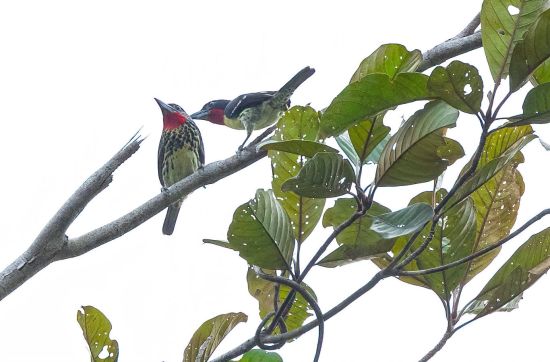- Capito niger
Identification
18-19cm
Black and yellow with a stout bill.
The female has more noticeable black marks on the underparts.
Distribution
South America: found in eastern Venezuela, Guyana, Suriname, French Guiana and northeast Brazil north of the Amazon.
Taxonomy
This is a monotypic species.
Formerly conspecific with Gilded Barbet. Clements used to include the subspecies aurantiicinctus, orosae, amazonicus, nitidior and hypochondriacus in this species but they are all now considered to be subspecies of Gilded Barbet.
Habitat
Moist lowland forests and swamps.
Behaviour
Diet
The diet includes 80% fruit and oily seeds and some insects.
Breeding
Both sexes excavate a cavity in a tree stump. The clutch consists of 3–4 white eggs which are incubated by both adults for 18 days. The young fledge after 34 days and fed by parents for an additional 23 days or so.
References
- Clements, J. F., P. C. Rasmussen, T. S. Schulenberg, M. J. Iliff, T. A. Fredericks, J. A. Gerbracht, D. Lepage, A. Spencer, S. M. Billerman, B. L. Sullivan, M. Smith, and C. L. Wood. 2024. The eBird/Clements checklist of Birds of the World: v2024. Downloaded from https://www.birds.cornell.edu/clementschecklist/download/
- Avibase
- Ezine Articles
Recommended Citation
- BirdForum Opus contributors. (2025) Black-spotted Barbet. In: BirdForum, the forum for wild birds and birding. Retrieved 13 May 2025 from https://www.birdforum.net/opus/Black-spotted_Barbet
External Links
GSearch checked for 2020 platform.1




